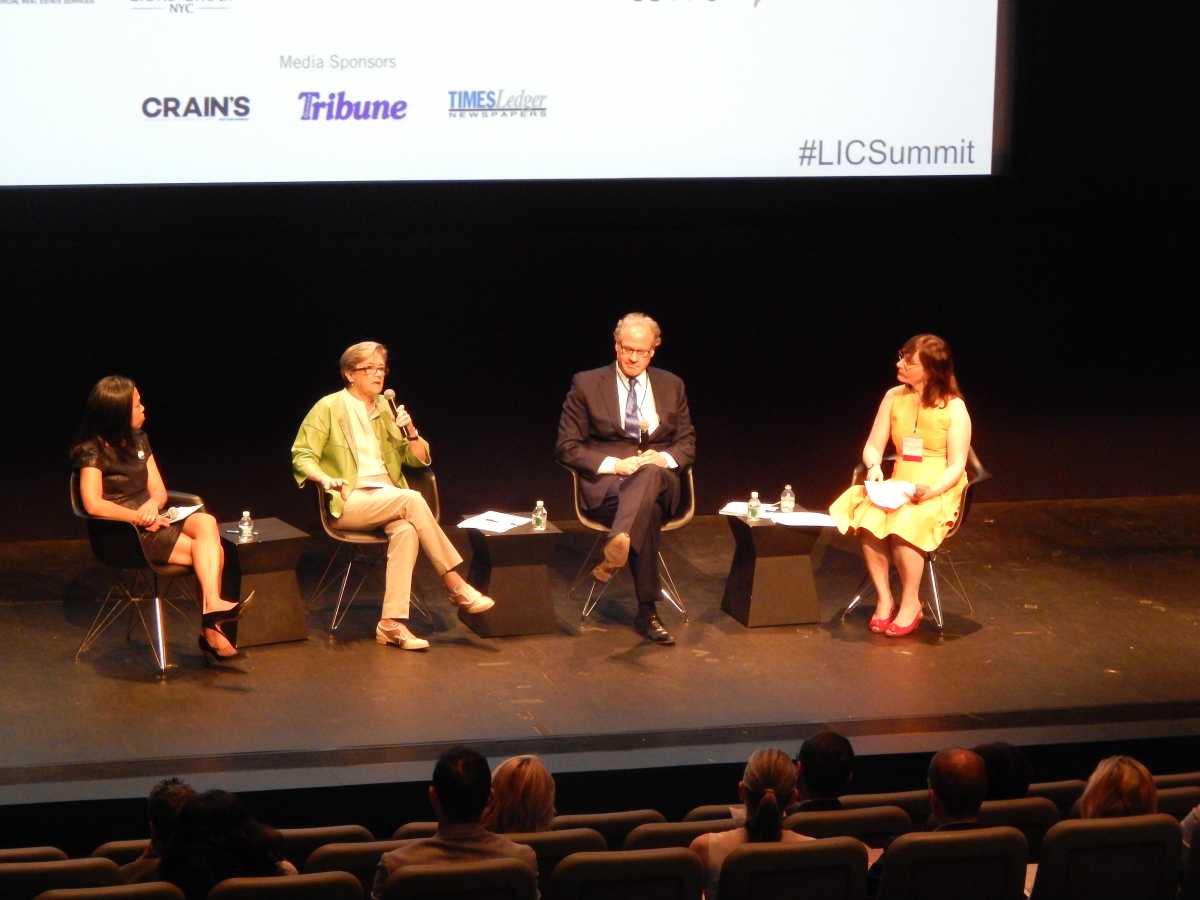For the third year in a row, hundreds of business leaders, city and state officials, Long Island City stakeholders and residents gathered at the Museum of the Moving Image for the Long Island City Partnership’s annual LIC Summit: Ideas and Impacts. Co-hosted by Modern Spaces and The Queens Courier, the summit featured panels discussing topics from the increasing workforce in Long Island City to the growth of industry in the area.
“This morning you’ll be hearing about the future of Long Island City,” said Congresswoman Carolyn B. Maloney, who was special guest of the summit. “It’s an extraordinary neighborhood that is flourishing with huge new residential and commercial development. It is really the new commercial hub in our city.”
Elizabeth Lusskin, president of LIC Partnership, highlighted some of the key findings of why Long Island City has become a popular place to settle as a resident or a business. Ultimately, it came down to people wanting to be in Long Island City. It is a place where different industries can co-work together, she said. There is an attachment to Long Island City, and it has the availability of affordable space to set up a work space for businesses.
Additionally, Lusskin pointed out the there is a lot in Long Island City that can improve. Public transit currently does not cover all of the places that commuters need to get to and they have had problems with overcrowding. There is also an overall increased income among the residents of Long Island City, but there are still pockets of poverty that exist. With the growing workforce in Long Island City, Lusskin asked if there would be enough job training and if potential employees would be connected to those jobs.
The keynote panel, which was moderated by Lusskin, consisted of Kathryn Wylde, president and CEO of Partnership for NYC; Maria Torres-Springer, president and CEO of the New York City Economic Development Corporation; and Howard Zemsky, president, CEO and commissioner of Empire State Department. This panel took on the issues of growth, job creation and opportunities for industry in Long Island City, both profit and nonprofit alike.
“I think the nonprofit sector will flourish as the community flourishes,” Kathryn Wylde said. “As you figure out what are the assets coming in, how can you translate that into value into your whole community (including the nonprofit sector), I think that’s part of the planning process that’s taking place.”
Panels throughout the course of the morning addressed these areas of concern and celebrated areas of success. One panel in particular entitled “Workforce of Today and Tomorrow” dove deep into the areas of what companies are doing to ensure support services and job training for those looking to start their professional or personal life in Long Island City. For example, JetBlue Airways has recognized the demand of technology in their field and how employers can do better at finding people to fill these positions.
“Corporations are not doing as good a job as they could be,” said Andrea Azzolina, director of shared development services for JetBlue Airways. She went on to point out that many people looking for jobs in technology fields are often overlooked for people with a higher level of education such as an undergraduate or master’s degree despite most jobs not requiring such high levels of education.
This panel also addressed how the growing workforce can give back to Long Island City. Douglas Stayman, associate dean at Cornell Tech, pointed out that all of the faculty’s research has to have some component of external community engagement. There is a disconnect between the neighborhood and the industry in Long Island City, which can give businesses the opportunity to reach out and give back.
Additional panels during the summit addressed Long Island City’s growth in the fashion industry as well as the plans for future transit. There will be some exciting new developments for companies such as Tishman Speyer, which will be building a new building to help with its growing business. The panel expressed that there is a lot to look forward to in Long Island City, and that the neighborhood’s future is looking very bright.
“There is a tremendous opportunity to nurture an innovation economy in Long Island City,” Wylde said. “The best has yet to come for this city.”









































